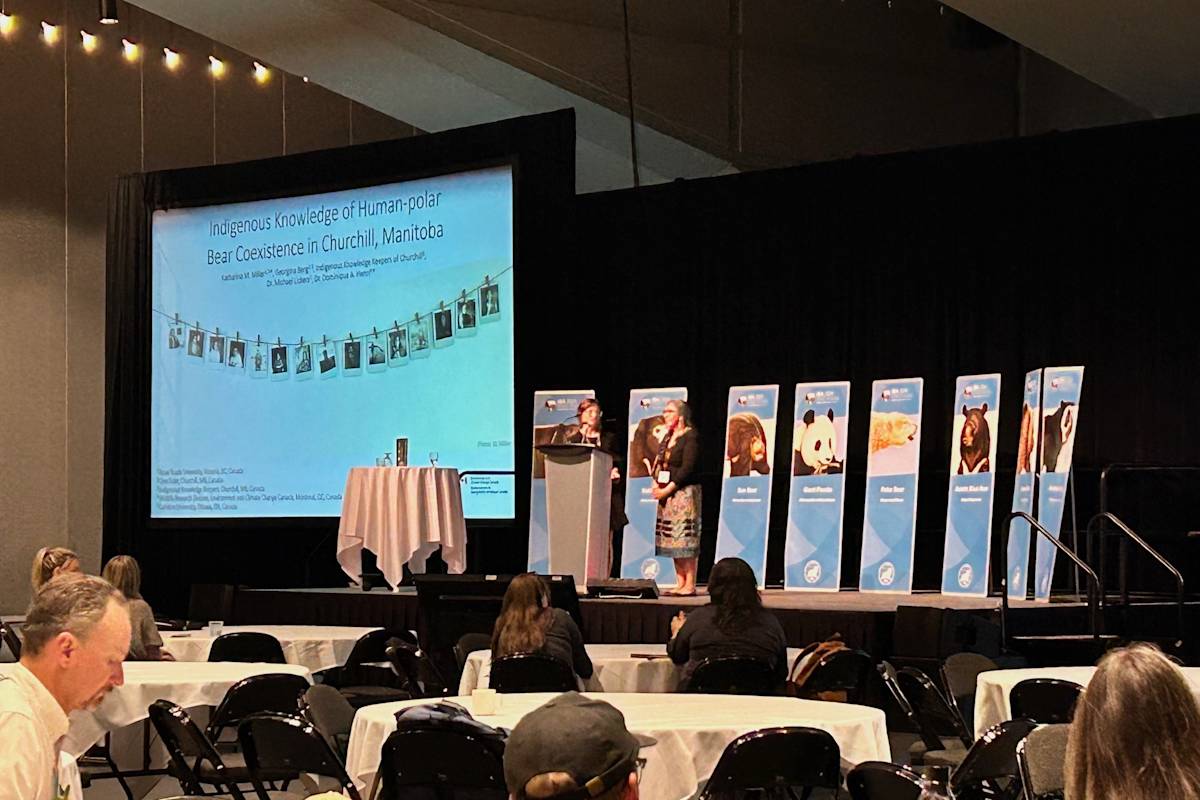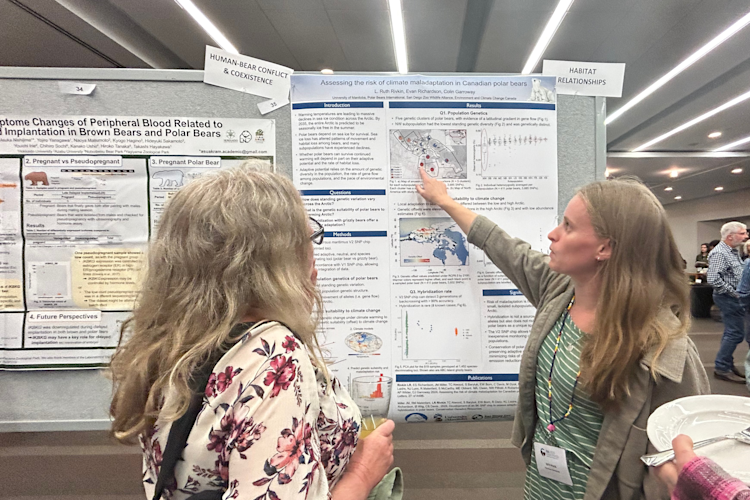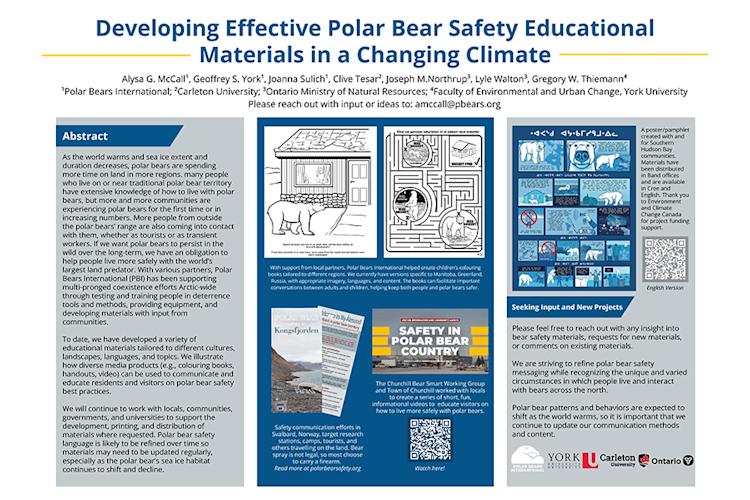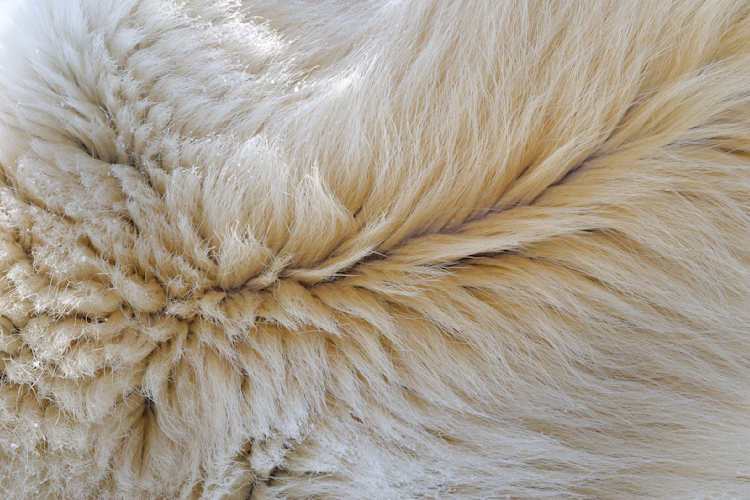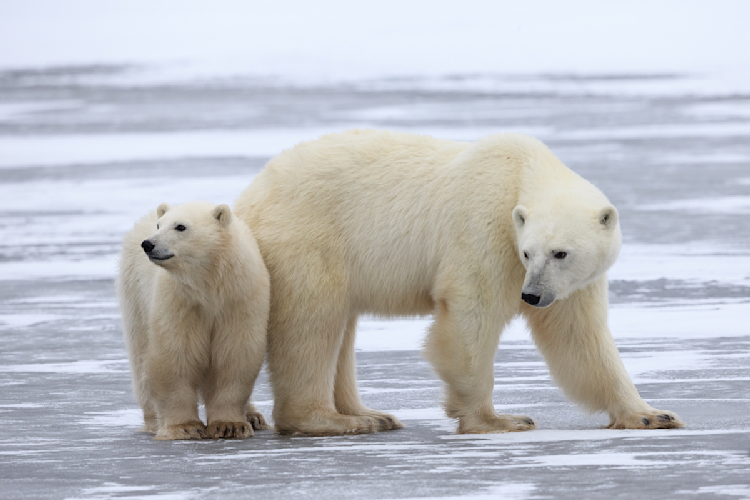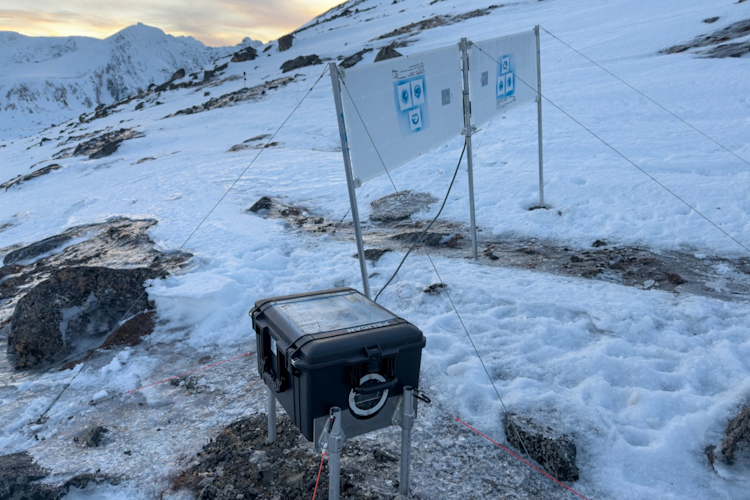From September 15-20, the International Bear Association (IBA) held its 28th annual conference in Edmonton, Alberta, Canada. Geoff York, our senior director of science and policy, and Alysa McCall, our staff scientist and director of conservation outreach, were in attendance, and they spoke to us about what they took away from the meeting.
What is the IBA conference?
Geoff: This is where the world's bear scientists and managers get together and share updates on what they've been up to. Historically, it’s been pretty science heavy, but over the years, it has expanded to include social science and Traditional Knowledge, and it's grown a little bit to include activities from very small nonprofits that are involved in bear safety and bear-related activities in communities.
Were there any particular topics, presentations, or areas of study that you were particularly looking forward to?
Geoff: I think for probably both Alysa and me, the conference as a whole is a huge opportunity just for continuing professional development on bear science and management across the board. It’s fun to come across tidbits from other species that you’re not expecting, which might have an application for polar bear research or that are just really interesting.
Alysa: I was really looking forward to hearing about what people are doing in different areas of the world on human-bear coexistence, both with polar bears and other bear species.
Did any presentations particularly leap out at you?
Geoff: To follow up on Alysa’s comment about coexistence, this meeting was a first for IBA in that it opened with a session on Indigenous Knowledge and cultural traditions regarding bears around the world. Bears were often, if not always, traditionally seen as the most closely related species to people. While we know that is not the case genetically, the notion is very strongly represented in mythology, religion, and cultural traditions across species and across regions globally, which is neat in and of itself. One of the presentations was an Indigenous Knowledge study that Polar Bears International (PBI) helped fund.
Alysa: I’d also like to plug our own Dr. Louise Archer, PBI’s postdoctoral research fellow. She’s using past data to model a future for polar bears; she's doing a phenomenal job and gave a wonderful talk.
I think one thing that stuck out to me is that there was one morning where there were several polar bear talks in a row. All were great. And then, listening to the questions and comments from the audience, from people that study terrestrial bears, and being reminded that polar bears really are so unique in the bear world. They’re the marine bear, they’re the ocean bear, and it really does make a difference in how we look at their conservation and their habitat challenges. Most of the week, we’re looking at forests and forest corridors and trees and mountains, and then along come polar bears and sea ice. And they’re not hibernating and they’re not eating the same prey. So that was kind of neat, to see that even other bear biologists were saying, Oh yeah, this is very different.
